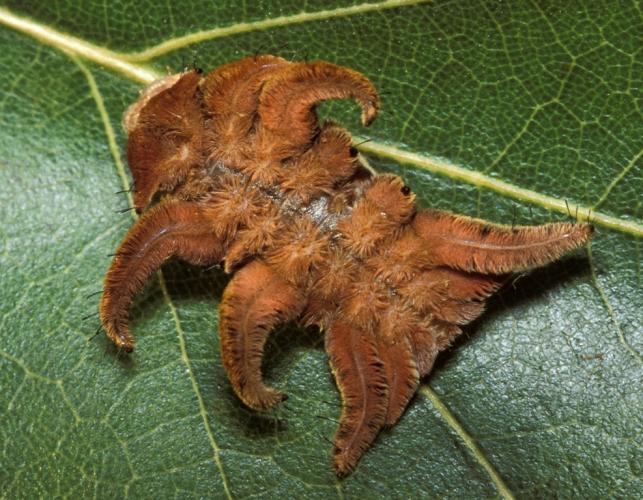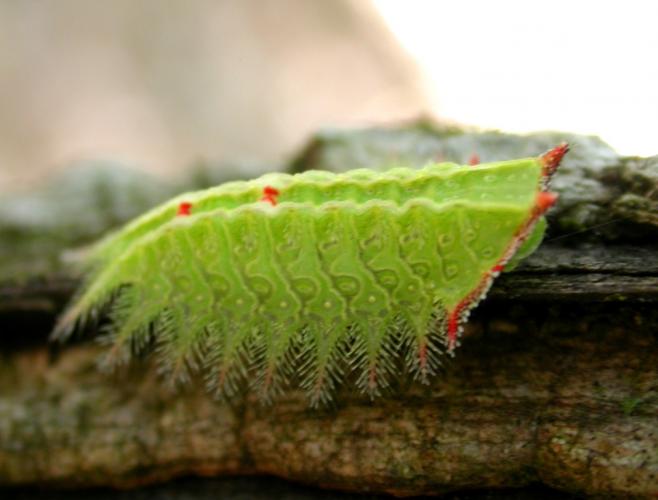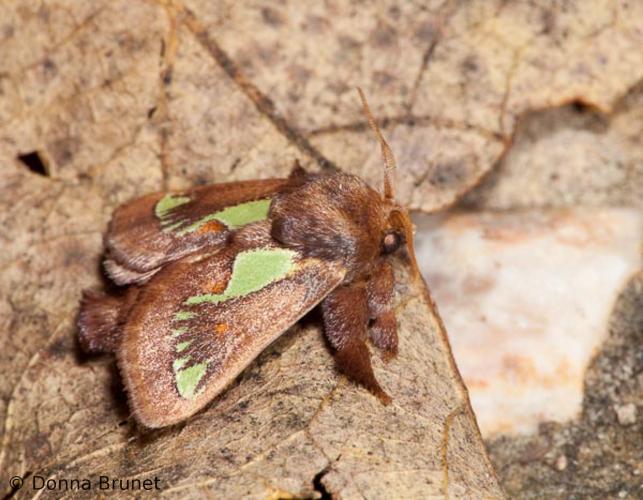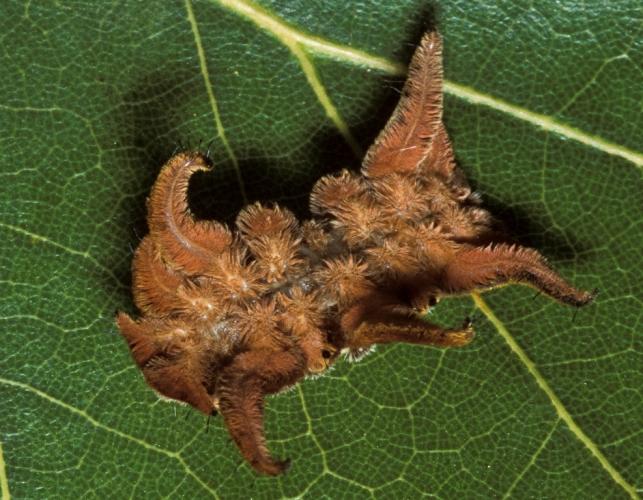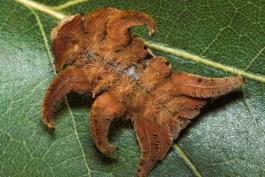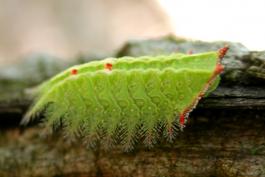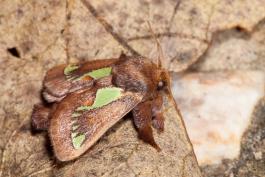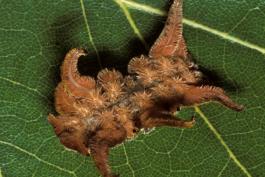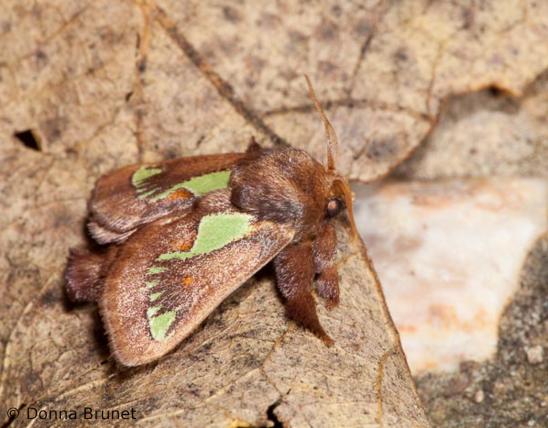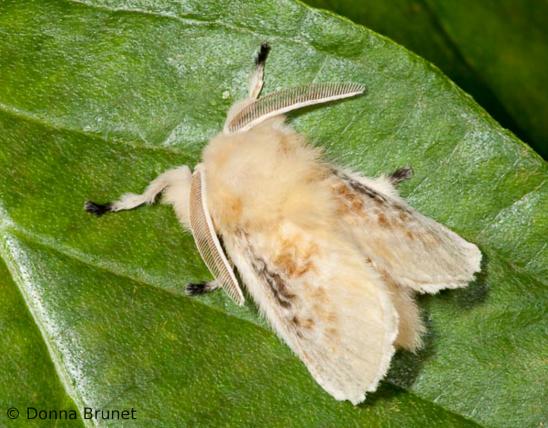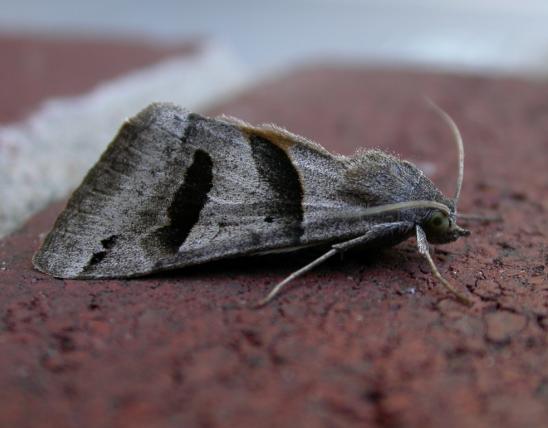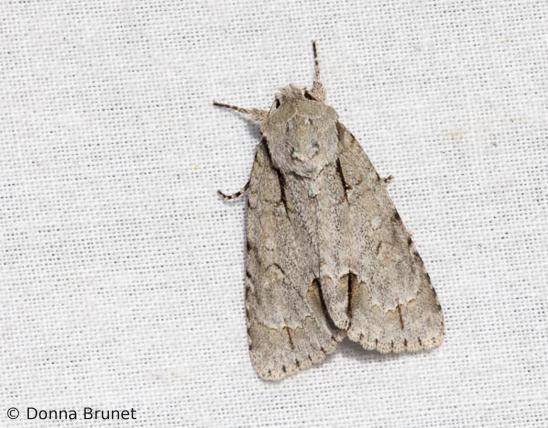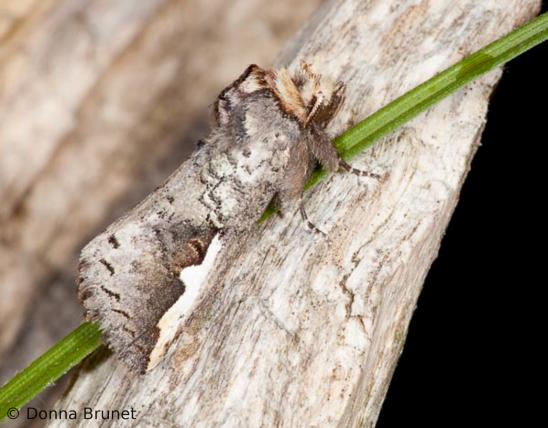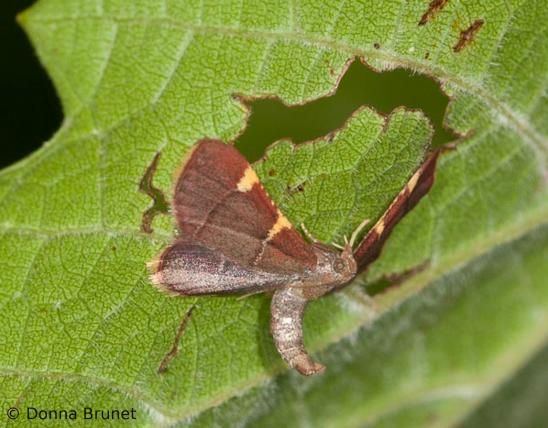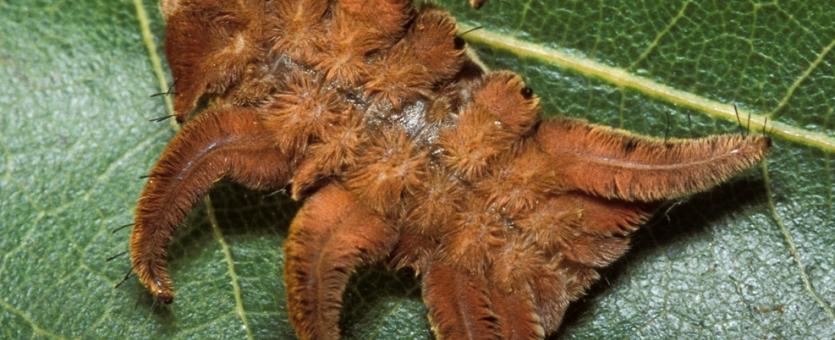
Missouri has more than 20 species in the slug caterpillar moth family. The adult moths’ heavy bodies and wide, rounded wings are both thickly covered with scales, creating a furry appearance. Many are bright yellow-brown with variously colored lines and patches on the forewings. Some have large bold green or brown patches. Males have comblike (bipectinate) antennae (at least in the basal half).
The caterpillars are remarkable. Instead of the usual peglike prolegs that most moth caterpillars have in midbody, slug caterpillars have suckers, which gives them a gliding, sluglike movement, inspiring the common name. Although some have smooth green bodies, some are bumpy, ridged, spiny, or densely hairy. Many species are brightly colored or marked, with odd-shaped tubercles, horns, and numerous stiff spines or hairs capable of delivering a painful sting.
Some typical species in this family are the saddleback caterpillar, spiny oak-slug, hag, and skiff moths. The saddleback caterpillar’s sting feels much like a bee sting. The monkey slug caterpillar (larva of the hag moth) looks something like a fuzzy, brown, slightly elongated starfish.
Habitat and Conservation
Food
Life Cycle
Human Connections
Look (and photograph), but don’t touch! The caterpillars in this group are famous for their stinging spines and hairs. Their purpose is to dissuade would-be predators. The caterpillars don’t “go after” people. But if you touch them or accidentally brush against them, you could get “zapped.” Many people are stung while gardening, so this is just one more good reason to use gloves, wear long sleeves, a floppy hat, and so on. Symptoms can include pain, rash, burning, itching, swelling, and blistering.
Usually the symptoms go away or decrease within about a day, but if they are severe or persist, seek medical help. Some experts suggest gently applying tape sticky-side-down to the affected area, then lifting it off to draw out the tiny hairs from your skin. A paste of baking soda and water can help relieve symptoms, as can hydrocortisone cream.
Although not all the caterpillars in this group have stinging spines or hairs, some people might be extra sensitive and have an allergic reaction to contact. This is generally true of larvae in all moth families, so we advise caution with any “hairy” or spiny caterpillars.
Apparently, the “fur” of the winged, adult moths is non-irritating for most people.
Ecosystem Connections
Moth caterpillars, which are soft and nutritious for potential predators, don’t move very fast and cannot fly, so generally speaking, they are prime dinner fare for many species of birds and other predators. Therefore, caterpillars of many species have developed ways to avoid being eaten. Camouflage is one typical defense strategy. But in this group, the bright color patterns of many species warn potential predators of stinging spines or hairs. This saves the caterpillar from expending time and energy building a leaf tent or other shelter, or from having to feed only at night.
